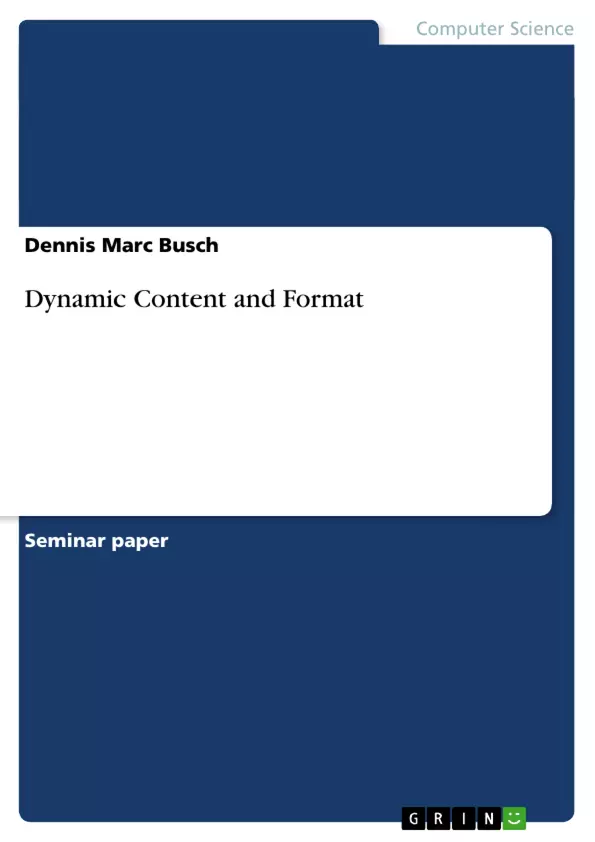”XML is text, but isn’t meant to be read”
Number three in WorldWideWeb Consortium’s (W3C) ”XML in 10 points” [W3C, 2001] pinpoints one main feature and problem of XML languages. They only describe the contained information based on structural aspects, and separate it from the design. In order to present this information, for example as a web page or in print, they have to be transformed into an appropriate form. XSL is an concept for expressing stylesheets that can transform XML documents. This paper provides an overview over the main concepts of transforming XML with XSL, describes another representative of generic markup, LATEX, and shows, how these concepts can be brought together into practice.
Inhaltsverzeichnis (Table of Contents)
- 1 "XML is text, but isn't meant to be read"
- 2 XSL
- 2.1 XSLT
- 2.2 XPath
- 2.3 XSL-FO
- 2.4 CSS An Alternative To XSL?
- 3 LATEX
- 4 Joining All Together
- 5 Conclusion
- A Appendix
Zielsetzung und Themenschwerpunkte (Objectives and Key Themes)
This paper explores the concept of transforming XML documents using XSL, particularly XSLT. It provides an overview of the core principles of XSL and compares it to other markup languages like LATEX. The paper demonstrates how these concepts can be integrated in practical applications.
- Transforming XML documents with XSL
- Exploring the components of XSL: XSLT, XPath, and XSL-FO
- Comparing XSL to other markup languages like LATEX
- Practical applications of XSL and LATEX
- The role of stylesheets in defining document transformations
Zusammenfassung der Kapitel (Chapter Summaries)
The first chapter discusses the fundamental concept of XML and highlights its focus on structural information, emphasizing the need for transformations to present this information effectively. Chapter two delves into XSL, a family of languages for defining XML document transformations. It covers the key components of XSL, including XSLT for transformation, XPath for accessing XML nodes, and XSL-FO for formatting. Chapter 2.1 focuses specifically on XSLT, detailing its process and components: source document, stylesheet, and resulting document. The chapter illustrates the interrelation between these components and introduces the different elements within a stylesheet.
Schlüsselwörter (Keywords)
XML, XSL, XSLT, XPath, XSL-FO, LATEX, document transformation, markup languages, stylesheets, formatting semantics, source document, stylesheet, resulting document, XML namespace, XPath patterns, template matching, literal result elements.
- Quote paper
- Diplom-Wirtschaftsinformatiker Univ. Dennis Marc Busch (Author), 2004, Dynamic Content and Format, Munich, GRIN Verlag, https://www.hausarbeiten.de/document/44365


